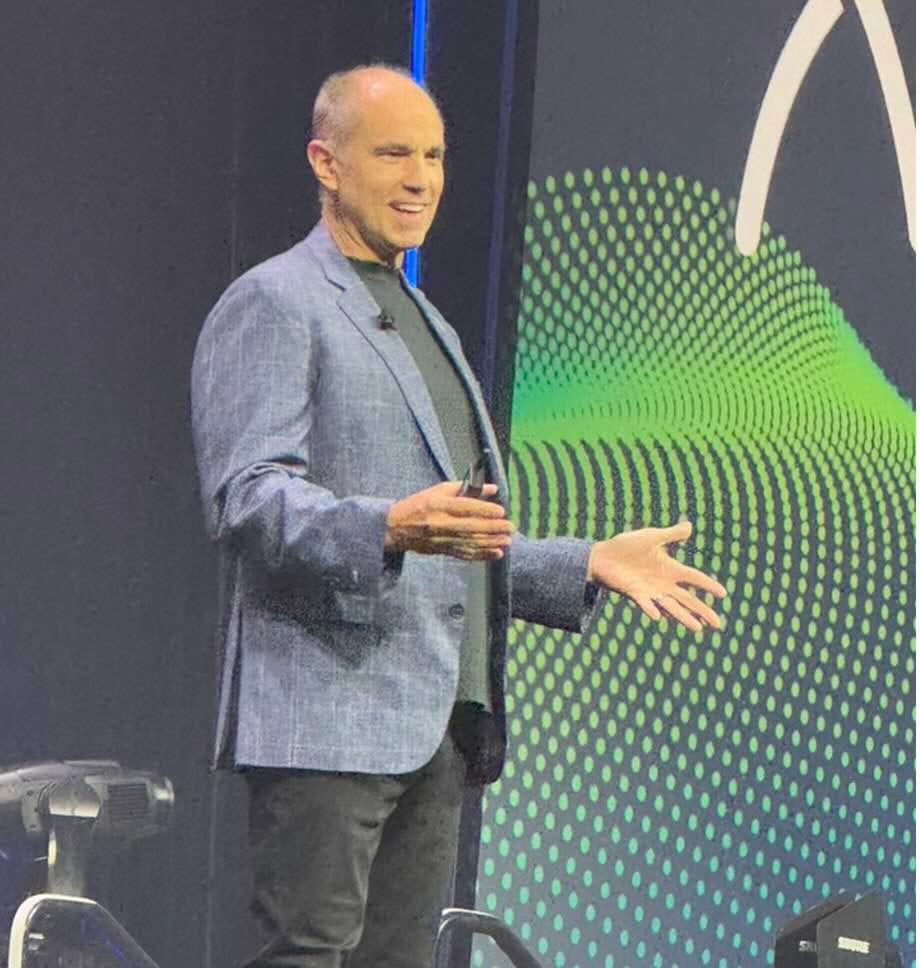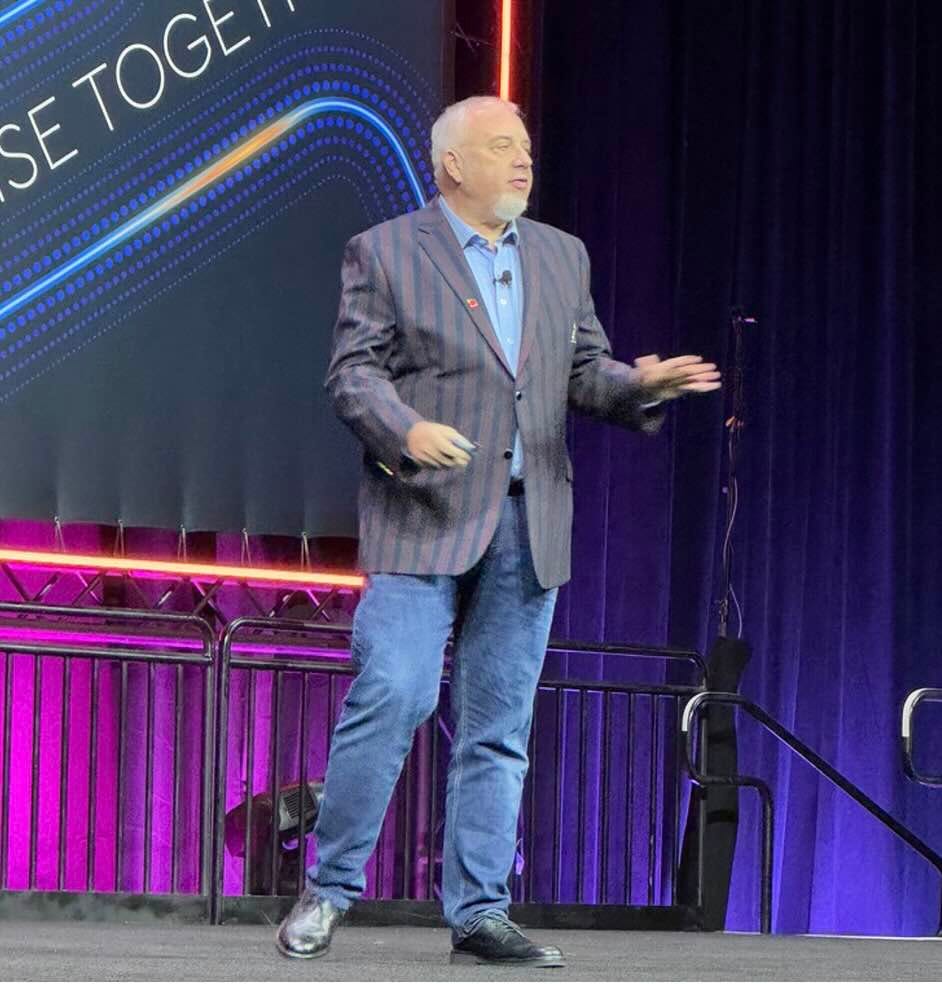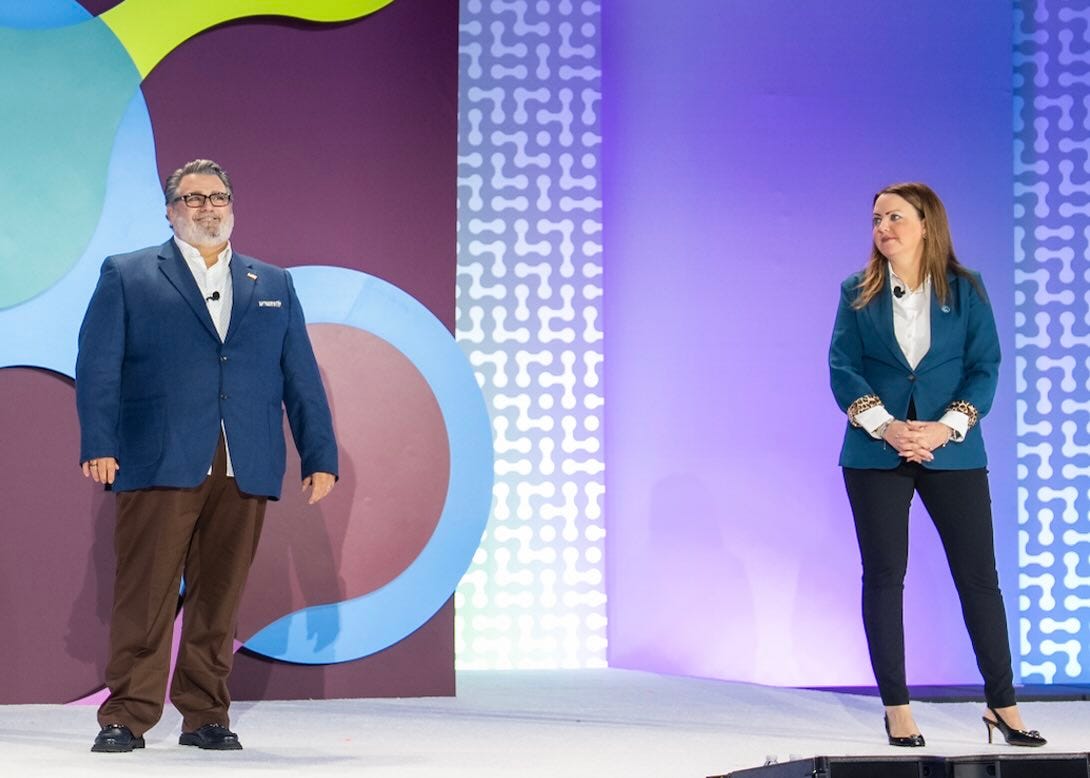ConnectWise Gets Real
The industry giant used its recent IT Nation Connect event as a trust rebuilding opportunity rather than chest-thumping exercise. Plus: why TD SYNNEX is giving partners a larger, louder voice.
It’s not even December yet, but I’m calling it anyway: “trust” is the word of the year for 2026.
It is for anyone interested in AI, anyway. From Deloitte to McKinsey to Forrester to the Council on Foreign Relations, if you can believe it, pretty much everyone who ponders such matters is in lockstep agreement lately that AI will do great things in business and beyond if the information it feeds us and actions it takes on our behalf earn our trust.
Trust is very much the word at ConnectWise too, moreover, judging by a conversation with CEO Manny Rivelo during the vendor’s recent IT Nation Connect show in Orlando. Give MSPs good products and support, he observed, and their trust is yours, along with a healthy share of their wallet.
“If you let them down for a period of time, you have to earn that trust back,” he added. And within a few quick months of stepping into his current job just over a year ago, Rivelo knew based on conversations with unhappy partners that ConnectWise had let a lot of people down.
“I heard things that to me were a little bit unbelievable,” he says, “like ‘I don’t know who my account manager is. I don’t know who my support person is.’” Partners who could identify those people weren’t confident their calls would be returned, and anyone with a billing issue more or less assumed that fixing it would take a long time.
“These were hard things to hear,” Rivelo (pictured) says. “But look, mea culpa. This is on us as a business.”
The thing about that last quote, though, is that Rivelo didn’t say it just to me. He said it in front of more than 4,000 MSPs, vendors, employees, and others during an opening day keynote presentation, and it set the tone for a message multiple speakers delivered during the show in the most public, forthright way possible: We’ve made mistakes, we’ve spent the last year fixing them, and—trust us—we’re ready to live up to your expectations.
“This isn’t your grandfather’s ConnectWise anymore,” said David Raissipour, who Rivelo named chief product and technology officer just shy of a year ago.
Which is a significantly less triumphal statement than you expect to hear from a $1 billion-plus company with one of the best-known brands in a giant market at its biggest conference of the year. But with competitors like NinjaOne, HaloPSA, and arch-rival Kaseya all outgrowing ConnectWise by sometimes significant amounts, per Omdia, Rivelo and team clearly believe now’s a moment less for chest thumping and football spiking than honesty and trust-building. So much so, in fact, that much of what company leaders said at the conference consciously or unconsciously reflected qualities that experts say inspire trust:
Benevolence. Trustworthy people have your best interest at heart. So too, according to Rivelo, does ConnectWise now that it’s implemented a new incentive scheme that rewards partner-facing employees for driving MSP success rather than software revenue.
“We’ve changed compensation for everybody inside the business that touches you, and they only get paid if you grow your business,” he told his keynote audience.
Predictability. You know what to expect from a trustworthy person. ConnectWise, accordingly, now has a publicly posted roadmap for the first time since its founding over three decades ago, and the dates it displays are more than good intentions, Raissipour insists.
“Everything that we show you is not just a commitment but a promise,” he told event goers. “We’re going to hit these dates, we’re going to hit these product deliverables, and we’re going to make our commitments back to you.”
To reinforce the point, he added, ConnectWise will never again demo a feature more than 90 days away from GA.
“I’ll repeat that,” Raissipour said. “We’re not going to show you anything that is more than a quarter out from you being able to use it and realize the value from it.”
Integrity: Trustworthy people exude authenticity. ConnectWise tried to as well at IT Nation Connect by doing away with speaker notes and prepared remarks during keynotes.
“There was nothing scripted,” Rivelo says. “Everybody spoke from the heart. The PowerPoint was just there to guide the conversation and make it a little bit more entertaining for the audience.”
Runtime
Which brings us to a fourth trust-building attribute—competence—and ConnectWise’s Asio platform. Since its debut in 2021, Asio’s consolidated data layer and plug-and-play services for functions like ticketing, alerting, and notifications have made it a potential time-to-market game changer. As Rivelo was quick to admit during his keynote, however, that vision still has yet to be fully realized four long years and $100 million of spending later.
“This has taken way longer than it should have,” he said.
In large part, according to Raissipour, because while ConnectWise called it a platform it didn’t build it that way. “We built it as if it was a product,” he says, in ways that limited its extensibility and reusability. It’s a common mistake, he adds.
“I think every single software company that I’ve ever been at that was really great at building products and decided that we’re going to build a platform ran into this exact same problem,” Raissipour (pictured) says.
Undoing it took a large hunk of the past year. “Part of that change was, I’ll be honest, changing people and adding people and subtracting people,” Raissipour says. “Part of it was changing some very basic engineering approaches to design.”
All of it, he continues, is pretty much finished at this point. “We’ve gotten it to the point where the platform is now a way to accelerate the business,” Raissipour says.
Mark Ralls, president of Auvik, a company ConnectWise relies on for the network monitoring and management portion of its Asio-based RMM solution, agrees. “I’d be willing to wager that this is the slowest we see ConnectWise execute,” he says. “They will only get faster and more effective as they go forward.”
That’s Rivelo’s expectation too. Taking over ConnectWise has been a crawl, walk, run process, he says, in which the first year was about crawling and walking. “The next year is about running.”
With partners running along, he hopes. Which they might, if they trust ConnectWise to follow through on its promises.
The agentic swarm
Of course, mea culpas weren’t the only thing ConnectWise issued from the main stage at IT Nation Connect this year. It had some product news as well, including the expansion of third-party patch capabilities in ConnectWise RMM from 350 products to more than 7,000, the launch of dedicated, MSSP-ready tenants for the updated SIEM solution the company introduced in June, and the extension of ConnectWise’s x360Recover solution to NAS devices.
The biggest piece of product news though, I’d argue, was the company’s first down payment on a larger, multi-year rollout of agentic AI capabilities, specifically the addition of autonomous detection and containment capabilities to ConnectWise’s MDR service. Due to reach market in Q1 of 2026, the new feature will both reduce the SLA subscribers get on issue triage to 15 minutes and automatically generate “proof-of-value” reports for MSPs to share with clients.
“When you’re having your customer QBR, you can pull those together to show your customers, ‘look at the work we have done on your behalf,’” says Russ Humphries (pictured), ConnectWise’s EVP of product management for data protection and cybersecurity.
Like forthcoming agentic upgrades elsewhere across the portfolio, he continues, this first one isn’t so much an agent as a swarm of them trained for specific tasks orchestrated by ConnectWise on an MSP’s behalf behind the scenes.
“You’ve got your business continuity persona, your disaster recovery persona, you’ve got a help desk persona, you’ve got a security persona,” Humphries says. “The platform’s job will be to glue these together.”
It’s already doing that job on a limited basis, in fact, in ConnectWise’s SOC. “We’re seeing massive improvement and we haven’t turned the knob all the way,” says Rivelo, who expects agents to cut the triage work humans do by 60% eventually, freeing up expertise for more demanding tasks. According to Humphries, MSPs will ultimately collect similar benefits.
“In the short to mid-term, your overall human capital spend for Tier one, Tier two, and Tier three may remain about the same, but it’ll mix shift,” he says. “You will end up spending less on Tier one and more on Tier two and Tier three skill sets.” Which will in turn let you charge more and profit more on consultative compliance and security services, he adds.
Partners will save even more time, according to Raissipour, further down the road when ConnectWise’s MDR agents progress from detecting and responding to endpoint incidents to resolving them for users.
“Taking that machine offline, scanning it, finding a piece of malware, and eliminating that piece of malware is not resolution, because they’re still not operational,” he says. “Resolution includes the step while that was happening where we stood up a virtual image of their machine.”
It’ll take beyond 2026 for ConnectWise to reach that final step, but make no mistake, Raissipour stresses. Agentic security is here now.
“It’s just a matter of how sophisticated are you, how much time do you want to invest?” he says. “And as time goes, the amount of time that you need to invest will get less and less, because the platforms will do more.”
TD SYNNEX turns the partner volume up to eight
Last week’s post about Ingram Micro’s recent ONE event noted that online marketplaces and product-led growth pose potentially existential threats to distributors, 20% of which will sell, merge, or exit the market by 2028, according to Omdia. It also noted that Ingram plans to mitigate that risk by combining cutting-edge technology with person-to-person relationships that no marketplace or self-serve website will ever provide.
Days later, in announcements entirely consistent with the strategy it underscored at its Inspire conference in September, TD SYNNEX announced the latest developments in its own people-and-tech strategy during its PartnerLINK event.
“So often it’s an either-or statement,” observes Kristi Kirby (pictured right), the distributor’s senior vice president for North American communities. “We’re trying to give them both.”
If the tech part of people-and-tech got a little extra attention at Inspire thanks to the launch of the company’s new PartnerFirst portal, the accent at PartnerLINK was squarely on people. More than just a conference, PartnerLINK is a community launched in April and architected as of last week around eight affinity groups for service providers, resellers, Canadian partners, print specialists, and others with distinct, related interests. Each group has its own advisory council, which means that TD SYNNEX executives are now speaking directly with some 60 vocal, engaged partners versus 15 back when there was just one council for everyone in North America.
“The members feel more influential than they ever have in the past,” says Anthony D’Ambrosi (pictured left), CEO of PartnerLINK member Abacus Group LLC and newly installed chair of PartnerLINK’s governing council. The larger goal, he adds, is to give PartnerLINK’s roughly 1,000 members a best-of-both-worlds experience combining the scale of a broadline disti with the kind of face-to-face relationships faceless marketplaces can’t offer.
“Bigger can be better,” D’Ambrosi says. “Bigger can still be more intimate and guide your resources where you get the best return.”
And he’s not just talking about prices. “What a lot of companies have traditionally done is shop around for the best deal on a transaction,” D’Ambrosi says. “It’s almost like you’re treating the distribution channel like a discounting consortium.” A wise partner goes deeper with fewer distributors offering strategic, growth-generating business advice.
Which, according to Kirby, is exactly what TD SYNNEX aims to provide by combining tools like PartnerFirst with communities like PartnerLINK. “We’re trying to free up time and resources to reinvest into business development, finding new markets, winning clients, servicing existing clients, or in a more intimate way, winning new business and expanding offerings,” she says.
Of course, TD SYNNEX stands to benefit from its community strategy as well. “There’s probably $15 billion of upside over the next three years that we can get our hands around as we start enabling some of these high-growth areas,” says Gary Palenbaum, the company’s EVP of revenue and customer success. PartnerLINK is a key element in his plan to grab that money, which is why TD SYNNEX is investing in additional field coverage for PartnerLINK members and rolling out benefits beyond the new advisory councils.
“That might be freight optimization, that might be credit support, that might be extra training and technical support, services that maybe someone else that’s not in PartnerLINK might be getting today,” Palenbaum says. There’s more on the roadmap for 2026 as well.
“You’re going to see very hands-on member experiences and member development. You’re going to see deepening engagement with our vendor community as well,” Kirby says. “We’re just getting started.”
Straight talk from Slide
If you’re curious about the lawsuit Kaseya filed against data protection startup Slide, I’d encourage you to check out the thorough, rigorous coverage posted by Dave Sobel, of The Business of Tech podcast. If you want to look Slide co-founders Austin McChord and Michael Fass in the eyes as they discuss the suit and a whole lot more about data protection and AI, I’d direct you to the latest episode of MSP Chat, the podcast I co-host, which features an interview with them. More great episodes besides that one here.
Also worth noting
N-able now has a Cyber Warranty Program offering users of its Adlumin MDR Advanced service $100,000 in financial protection per protected entity.
Freshworks has updated its Freshservice IT management solution and Freddy AI agents in ways aimed at simplifying service delivery and boosting technician productivity.
Insight’s new Insight AI suite is designed to help clients rapidly realize AI value through tailored roadmaps and proven ROI frameworks based on real-world expertise.
Major enhancements to Dell’s PowerProtect portfolio include the new PowerProtect Data Manager Appliance, expanded cloud support, and Dell NativeEdge integration.
ThreatDown has a new partner program offering added discounts, revenue protection, marketing resources, technical support, and dedicated enablement teams.
Cynet’s new partner program offers streamlined MDF and expanded support.
The new edition of Cyware’s Quarterback AI weaves together generative, agentic, and in-product AI to accelerate threat intelligence and security operations workflows.
Good news for anyone frightened by this: TrojAI has a new solution designed to provide runtime visibility, policy enforcement, and security to MCP users.
Exclusive Networks partners in North America now have access to Infoblox’s DDI and DNS-based security solutions for protecting hybrid and multi-cloud environments.
Aryaka Unified SASE 2.0 offers ZTNA and new functionality that both limits employee access to public GenAI apps and safeguards internal GenAI services.
Good tech is almost as important to U.S. job seekers as the people they’ll be working with, according to a TeamViewer study that also says 36% of people have considered quitting over “digital friction” at work.
Go figure: A mere 12% of people surveyed by Atera say AI governance and ownership are “very clear and fully standardized” yet just 32% called governance and risk management for AI systems a priority.
It’s all about data in AI, folks. Per new research from DataStrike, 61% of IT leaders call developing a data strategy their top priority and nearly 75% are interested in outsourcing database infrastructure management.
Marc Brown, the former Microsoft VP responsible for that company’s LinkedIn, GitHub, and Minecraft acquisitions, has joined Syncro’s board of directors.








